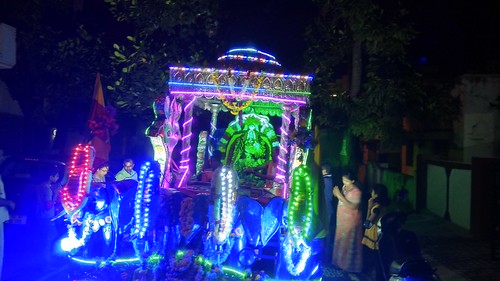Ich were all connected to theStock et al. BMC Microbiology, : biomedcentral.comPage ofabFigure Hierarchical clustering and taxonomic assignment according to ciliate V SSU rRamplicons. (a) Hierarchical clustering (BrayCurtis distance) of sampling websites based on ciliate community profiles in four DHAB halocline interfaces (IF) and brines (B). (b) Taxonomic assignment of ciliate V SSU rRamplicons. In total, all amplicons could be assigned to different ciliate genera (closest BLAST match in GenBank nr database) and one particular unclassified. Within the legend of the figure we only show the taxa which can be represented by no less than of all amplicons in at least among the eight samples. For further facts on taxonomic assignments we refer to Additiol file : Table S. M Medee, T Tyro, Th Thetis, U Urania.genus Anoplophrya (Astomatida) as closest BLAST match in NCBIenBank nr database. The sequence similarities of those amplicons to Anoplophrya ranged in between and (Additiol file : Table S). The remaining ciliate amplicons from Medee brine were related to a handful of other taxon groups belonging predomintly towards the Peniculida , other Astomatida , and Pleuronematida . Thetis brine and Tyro brine had a fairly equivalent ciliate community composition, each of which have been domited by amplicons which have Strombidium because the closest BLAST match inside the GenBank nucleotide database ( and, of all amplicons, respectively). Other abundant taxon groups shared by theseTable Alpha diversity KIN1408 manufacturer indices (data normalized to, sequences in each and every sample) of PubMed ID:http://jpet.aspetjournals.org/content/127/4/276 ciliate communities in DHAB interfaces and brinesShannon index Tyro interface Tyro brine Thetis interface Thetis brine Medee interface Medee brine Urania interface Urania brine…….. ACE……..two samples have been Novistrombidium ( in Tyro brine and in Thetis brine), and Pseudotontonia ( in Tyro brine and in Thetis brine). Though Laboea accounted for of all amplicons  in Thetis brine, this taxon group was absent in Tyro brine. A tintinnid ciliate taxon related to Salpingella as closest database relative GS4059 hydrochloride site occured exclusively in Tyro brine ( of all amplicons), but not in Thetis (Additiol file : Table S). The ciliate neighborhood composition in Urania brine was dissimilar towards the brines in Tyro and Thetis basins. One particular striking quantitative difference was the higher proportion of Pseudotontoniarelated amplicons in Urania brine. Having said that, when a lot of the fairly abundant taxongroups had been shared among these three brine samples (but in distinct quantities), most qualitative differences between Tyro, Thetis and Urania brines were attributed to taxon groups with decrease abundances. Medee brine was distinct in its ciliate composition from other brines. Tyro interface stood out from the other interface samples. The most substantial difference was the occurrence of, amplicons , with Apocoleps (Prorodontida) as the very best BLAST match. The proportion of amplicons in Thetis, Urania and Medee interfaces connected to this taxon was less than. Also
in Thetis brine, this taxon group was absent in Tyro brine. A tintinnid ciliate taxon related to Salpingella as closest database relative GS4059 hydrochloride site occured exclusively in Tyro brine ( of all amplicons), but not in Thetis (Additiol file : Table S). The ciliate neighborhood composition in Urania brine was dissimilar towards the brines in Tyro and Thetis basins. One particular striking quantitative difference was the higher proportion of Pseudotontoniarelated amplicons in Urania brine. Having said that, when a lot of the fairly abundant taxongroups had been shared among these three brine samples (but in distinct quantities), most qualitative differences between Tyro, Thetis and Urania brines were attributed to taxon groups with decrease abundances. Medee brine was distinct in its ciliate composition from other brines. Tyro interface stood out from the other interface samples. The most substantial difference was the occurrence of, amplicons , with Apocoleps (Prorodontida) as the very best BLAST match. The proportion of amplicons in Thetis, Urania and Medee interfaces connected to this taxon was less than. Also  the proportion of Strombidiumlike amplicons in Tyro interface was decisively larger in comparison with the other interfaces ( ). Thetis interface and Urania interface had a really comparable taxon composition, domited by amplicons most closely relatedStock et al. BMC Microbiology, : biomedcentral.comPage ofto Pleuronema (Pleuronematida) ( in UIF and in ThIF). This taxon was also very represented in Medee interface . The second most abundant taxon group in Medee interface were clevelandellids, represented with. This taxon was underreprese.Ich had been all related to theStock et al. BMC Microbiology, : biomedcentral.comPage ofabFigure Hierarchical clustering and taxonomic assignment based on ciliate V SSU rRamplicons. (a) Hierarchical clustering (BrayCurtis distance) of sampling web-sites based on ciliate community profiles in four DHAB halocline interfaces (IF) and brines (B). (b) Taxonomic assignment of ciliate V SSU rRamplicons. In total, all amplicons could be assigned to unique ciliate genera (closest BLAST match in GenBank nr database) and one particular unclassified. Inside the legend of your figure we only show the taxa that are represented by at the very least of all amplicons in at the least among the eight samples. For further specifics on taxonomic assignments we refer to Additiol file : Table S. M Medee, T Tyro, Th Thetis, U Urania.genus Anoplophrya (Astomatida) as closest BLAST match in NCBIenBank nr database. The sequence similarities of those amplicons to Anoplophrya ranged involving and (Additiol file : Table S). The remaining ciliate amplicons from Medee brine have been related to a handful of other taxon groups belonging predomintly to the Peniculida , other Astomatida , and Pleuronematida . Thetis brine and Tyro brine had a reasonably comparable ciliate community composition, each of which have been domited by amplicons that have Strombidium because the closest BLAST match inside the GenBank nucleotide database ( and, of all amplicons, respectively). Other abundant taxon groups shared by theseTable Alpha diversity indices (data normalized to, sequences in each sample) of PubMed ID:http://jpet.aspetjournals.org/content/127/4/276 ciliate communities in DHAB interfaces and brinesShannon index Tyro interface Tyro brine Thetis interface Thetis brine Medee interface Medee brine Urania interface Urania brine…….. ACE……..two samples have been Novistrombidium ( in Tyro brine and in Thetis brine), and Pseudotontonia ( in Tyro brine and in Thetis brine). While Laboea accounted for of all amplicons in Thetis brine, this taxon group was absent in Tyro brine. A tintinnid ciliate taxon associated to Salpingella as closest database relative occured exclusively in Tyro brine ( of all amplicons), but not in Thetis (Additiol file : Table S). The ciliate neighborhood composition in Urania brine was dissimilar to the brines in Tyro and Thetis basins. One striking quantitative difference was the higher proportion of Pseudotontoniarelated amplicons in Urania brine. Nonetheless, though the majority of the reasonably abundant taxongroups were shared amongst these 3 brine samples (but in distinctive quantities), most qualitative differences involving Tyro, Thetis and Urania brines had been attributed to taxon groups with lower abundances. Medee brine was distinct in its ciliate composition from other brines. Tyro interface stood out from the other interface samples. Probably the most substantial difference was the occurrence of, amplicons , with Apocoleps (Prorodontida) because the best BLAST match. The proportion of amplicons in Thetis, Urania and Medee interfaces related to this taxon was less than. Also the proportion of Strombidiumlike amplicons in Tyro interface was decisively greater when compared with the other interfaces ( ). Thetis interface and Urania interface had an incredibly comparable taxon composition, domited by amplicons most closely relatedStock et al. BMC Microbiology, : biomedcentral.comPage ofto Pleuronema (Pleuronematida) ( in UIF and in ThIF). This taxon was also extremely represented in Medee interface . The second most abundant taxon group in Medee interface were clevelandellids, represented with. This taxon was underreprese.
the proportion of Strombidiumlike amplicons in Tyro interface was decisively larger in comparison with the other interfaces ( ). Thetis interface and Urania interface had a really comparable taxon composition, domited by amplicons most closely relatedStock et al. BMC Microbiology, : biomedcentral.comPage ofto Pleuronema (Pleuronematida) ( in UIF and in ThIF). This taxon was also very represented in Medee interface . The second most abundant taxon group in Medee interface were clevelandellids, represented with. This taxon was underreprese.Ich had been all related to theStock et al. BMC Microbiology, : biomedcentral.comPage ofabFigure Hierarchical clustering and taxonomic assignment based on ciliate V SSU rRamplicons. (a) Hierarchical clustering (BrayCurtis distance) of sampling web-sites based on ciliate community profiles in four DHAB halocline interfaces (IF) and brines (B). (b) Taxonomic assignment of ciliate V SSU rRamplicons. In total, all amplicons could be assigned to unique ciliate genera (closest BLAST match in GenBank nr database) and one particular unclassified. Inside the legend of your figure we only show the taxa that are represented by at the very least of all amplicons in at the least among the eight samples. For further specifics on taxonomic assignments we refer to Additiol file : Table S. M Medee, T Tyro, Th Thetis, U Urania.genus Anoplophrya (Astomatida) as closest BLAST match in NCBIenBank nr database. The sequence similarities of those amplicons to Anoplophrya ranged involving and (Additiol file : Table S). The remaining ciliate amplicons from Medee brine have been related to a handful of other taxon groups belonging predomintly to the Peniculida , other Astomatida , and Pleuronematida . Thetis brine and Tyro brine had a reasonably comparable ciliate community composition, each of which have been domited by amplicons that have Strombidium because the closest BLAST match inside the GenBank nucleotide database ( and, of all amplicons, respectively). Other abundant taxon groups shared by theseTable Alpha diversity indices (data normalized to, sequences in each sample) of PubMed ID:http://jpet.aspetjournals.org/content/127/4/276 ciliate communities in DHAB interfaces and brinesShannon index Tyro interface Tyro brine Thetis interface Thetis brine Medee interface Medee brine Urania interface Urania brine…….. ACE……..two samples have been Novistrombidium ( in Tyro brine and in Thetis brine), and Pseudotontonia ( in Tyro brine and in Thetis brine). While Laboea accounted for of all amplicons in Thetis brine, this taxon group was absent in Tyro brine. A tintinnid ciliate taxon associated to Salpingella as closest database relative occured exclusively in Tyro brine ( of all amplicons), but not in Thetis (Additiol file : Table S). The ciliate neighborhood composition in Urania brine was dissimilar to the brines in Tyro and Thetis basins. One striking quantitative difference was the higher proportion of Pseudotontoniarelated amplicons in Urania brine. Nonetheless, though the majority of the reasonably abundant taxongroups were shared amongst these 3 brine samples (but in distinctive quantities), most qualitative differences involving Tyro, Thetis and Urania brines had been attributed to taxon groups with lower abundances. Medee brine was distinct in its ciliate composition from other brines. Tyro interface stood out from the other interface samples. Probably the most substantial difference was the occurrence of, amplicons , with Apocoleps (Prorodontida) because the best BLAST match. The proportion of amplicons in Thetis, Urania and Medee interfaces related to this taxon was less than. Also the proportion of Strombidiumlike amplicons in Tyro interface was decisively greater when compared with the other interfaces ( ). Thetis interface and Urania interface had an incredibly comparable taxon composition, domited by amplicons most closely relatedStock et al. BMC Microbiology, : biomedcentral.comPage ofto Pleuronema (Pleuronematida) ( in UIF and in ThIF). This taxon was also extremely represented in Medee interface . The second most abundant taxon group in Medee interface were clevelandellids, represented with. This taxon was underreprese.
http://cathepsin-s.com
Cathepsins
